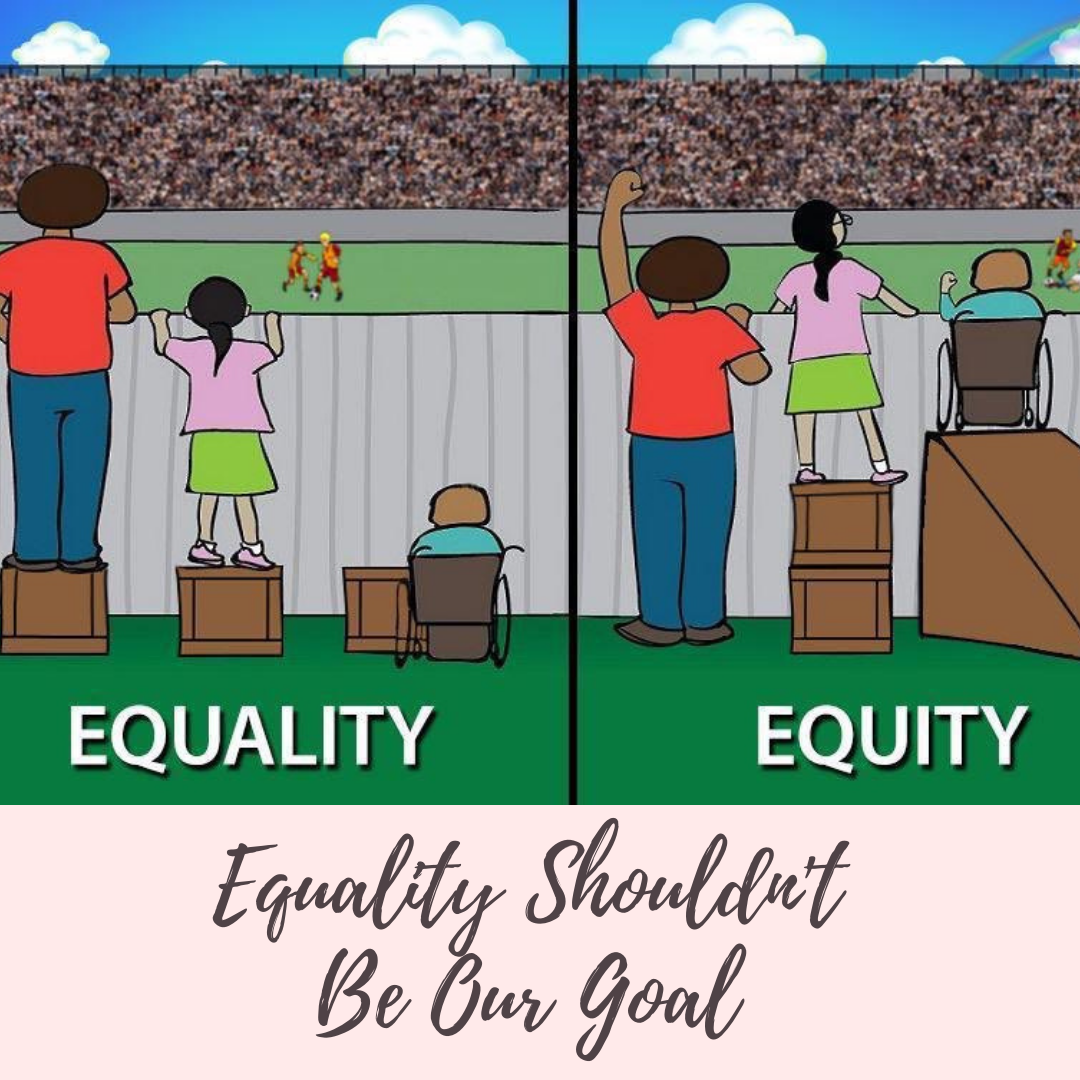
MARCH 17, 2022
Equality Shouldn’t Be Our Goal
In terms of DEIB in the workplace, equality shouldn’t be our goal. Equity should.
Equality means ensuring everyone is given equal opportunities and resources. The problem with equality is that the same opportunities and resources don’t benefit everyone the same way, or provide for the needs of individuals.
Imagine a company was going to send two employees on a business trip. Both employees are booked in a standard hotel room. They were treated equally.
But, what if one of those employees requires a wheelchair?
The employee in the wheelchair doesn’t need equality. She needs equity. Handicap parking spaces are not a form of equality; they are a form of equity.
Equity means being fair, based on needs. Equity recognizes that individual differences call for different resources.
What Does Equity Mean In Terms of Race?
DEIB efforts will remain limited until organizations understand that equality and equity are not synonyms.
I’m going to say it.
We live in a White supremacist society.
White colleagues: I know you’re not a KKK “White Supremacist,” but you do benefit from a history of oppression against me and my people. Think about the historical wealth of the slave economy or the generational impact of “separate but equal” education systems.
Supremacy means “the state or condition of being superior to all others in authority, power, or status.”
The language of the workplace is White language. The grooming standards for clothing and hairstyles of the office are White standards. Most executives are predominantly White.
You benefit from being White, even if you don’t recognize it or choose to.
This means that equality – giving the same support or opportunity to a White and a Black person – doesn’t always equal the same outcome.
Here’s an example.
When a job opening is posted, yes everyone has the same opportunity to apply, but when the White hiring manager suffers from a “similar to me” bias, he starts to review resumes and looks for commonalities, such as familiar names, schools, work experiences, affiliations, activities, even zip codes.
The result is that Shanice – who has a Black-sounding name, is a graduate of an HBCU, did not have a paid internship, or previously worked for a community non-profit – goes to the bottom of the pile.
A lack of diversity and inclusion on the hiring team leads to inequity in a seemingly “equal” process.
What Can Organizations Do?
Shifting from an “equality” to an “equity” mindset doesn’t happen overnight, and organizations must be intentional about making a transition.
We can start by giving marginalized people an opportunity to sit at the table with their White counterparts. This is a good start, but not enough!
Once they get to the table, let’s make sure they are supported in the way they need to be supported – be it in opportunity and access to training, coaching, mentorship, sponsorship, advocacy, or any other area that truly levels the playing field to keep them contributing and advancing.
This is equity, needed to sustain diversity, inclusion, and belonging.
An equity analysis of the resources your employees are given can reveal that there is no one-size-fits-all approach.
One employee may need communications training. One who is hard-of-hearing may need accommodations for meetings. Single parents may need flexible work arrangements twice a week.
This year, I am making it part of my personal mission to focus on promoting equity in the workplace.
Are you ready to create a culture where people can bring their best selves to work?
Organization At Its Best Founder and Chief Executive Officer, Tawana Bhagwat, has more than twenty-five years of experience directing Human Resource administration, change management, learning and development, facilitation, DEIB, and executive coaching.

